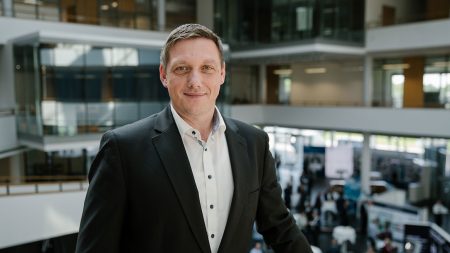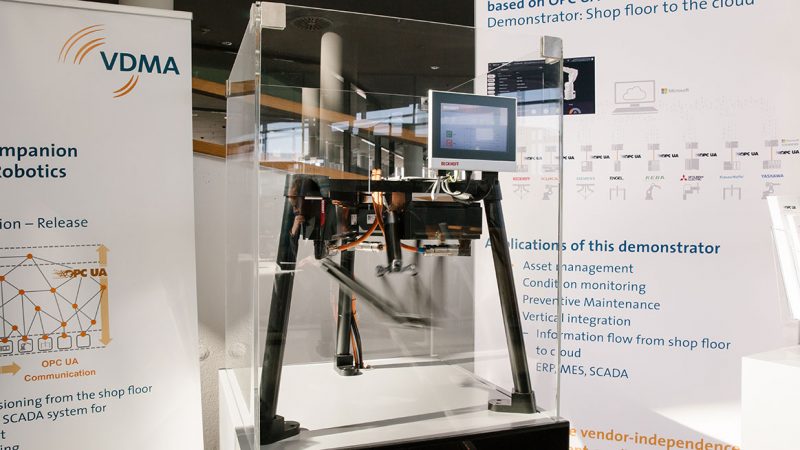Who still remembers the past when you connected a mouse to your PC and it didn’t spring into action immediately? Before there was “plug-and-play”? Back then you had to find the right port, find and install the appropriate driver, and generally sacrifice a lot of time and nerves with the whole process. Until the next update came, or the driver didn’t work anymore – when the whole episode started from scratch again.
Imagine that you don’t just have a mouse and a PC, but thousands of them, all different, that you have to set up again and again, adjusting them to the overall system – while maintaining a huge production flow and manufacturing and logistics processes coordinated right down to the smallest detail. Welcome to industry, welcome to Volkswagen! Because different manufacturers of robots and machines use different hardware, software and interfaces – which the manufacturer then has to adjust to each other at the end of the production chain in their respective production plants so that they function accordingly.
 “Today there are up to 12 different machine languages in use worldwide, which doesn’t exactly make global networking of plants easy,” says Michael Schweiger, Volkswagen Account & Demand Manager. He is in charge of OPC UA (Open Platform Communications Unified Architecture), together with around 30 people working on the topic across all brands in the Volkswagen Group. Schweiger says: “There are still many different data building blocks, different communication protocols, all in all a confusion of different technologies. This is a massive challenge in production. We want to simplify this considerably. And that’s where we’re going now!”
“Today there are up to 12 different machine languages in use worldwide, which doesn’t exactly make global networking of plants easy,” says Michael Schweiger, Volkswagen Account & Demand Manager. He is in charge of OPC UA (Open Platform Communications Unified Architecture), together with around 30 people working on the topic across all brands in the Volkswagen Group. Schweiger says: “There are still many different data building blocks, different communication protocols, all in all a confusion of different technologies. This is a massive challenge in production. We want to simplify this considerably. And that’s where we’re going now!”
The solution is called OPC UA and is an open communication standard for machines. “You can imagine it like the world language Esperanto; just for robots – an artificial language that was specially developed for machines to communicate with each other without any problems,” says Schweiger. Basically, it’s like using a mouse and a PC in the past and in the present. It used to be cumbersome and took a long time – now it’s plug-and-play. Applied analogously to industry 4.0, one could say, “plug-and-produce”.

